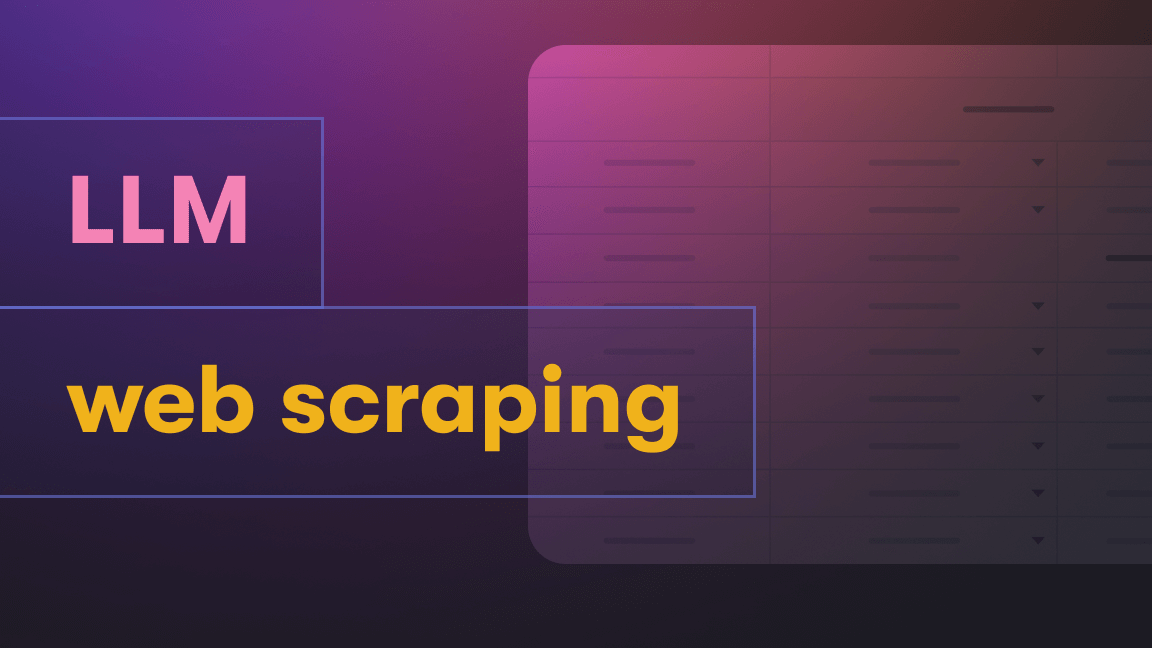In this article, we'll walk you through what AI data extraction is, how it works, and why it's becoming such a powerful tool for businesses. You'll learn about its benefits, common applications, and even some challenges to watch out for.
What is AI data extraction?
AI data extraction retrieves valuable information from various sources and structures it. Traditionally, analyzing documents, images, or web pages required significant manual work. AI data extraction automates this process by finding patterns and pulling out relevant information.
Benefits of AI data extraction:
- Improved accuracy: Get the data you need to make decisions quickly and reliably.
- Faster processing: Even basic AI methods can cut document processing time by 40%.
- Lower costs: AI captures all data, reducing human error and missed insights.
AI can extract information from unstructured sources like emails, chatbot conversations, customer support tickets, and much more.
Why does this matter?
Let's say you want to improve your website's conversion rate. You might start with an audit to check how well your current strategies work and find areas to improve. AI data extraction can help you understand customer behavior and preferences, allowing you to make targeted changes. This technology can even support professional CRO services for better results.
How AI data extraction works
Here’s an overview of how AI data extraction works:
Data preprocessing
- Cleaning: Fixing errors and inconsistencies to ensure high-quality data.
- Transformation: Converting data into a format that's easier to analyze and use.
- Integration: Combining data from different sources to create a complete picture.
Machine learning algorithms
- Supervised: Using labeled data to train models for making predictions or classifications.
- Unsupervised: Finding hidden patterns and structures in unlabeled data.
- Semi-Supervised: Combining labeled and unlabeled data to improve accuracy and efficiency.
Natural language processing (NLP)
- Text analysis and parsing: Breaking down text into smaller parts for easier processing and understanding.
- Named entity recognition: Identifying specific entities, such as names, locations, or organizations.
- Sentiment analysis: Determining the emotional tone or opinion expressed in text.
Deep learning and neural networks
- Convolutional neural networks (CNN): Excellent for image-related tasks like object detection, classification, and segmentation. CNNs use layers and filters to process visual data, recognizing patterns, shapes, and textures in images.
- Recurrent neural networks (RNN): Specially designed to handle sequential data such as time series or natural language. RNNs can store information from previous inputs, allowing them to understand context and make predictions based on past data.
- Transformers: Advanced neural networks that can process long-range dependencies in data, often used in NLP tasks. For example, you can find them in machine translation, text generation, and sentiment analysis.
Let’s look at an example of email data extraction, a common use case. The AI data extraction process scans emails, identifies necessary fields, and collects the data in a structured format.
AI data extraction isn't just for emails. It can pull insights from documents, images, social media, and websites too. It even detects and translates languages, helping global companies gather information from different regions and markets. This gives businesses useful information about how customers behave, what's trending in the market, and more.

Web scraping for AI-powered travel operations
Acai Travel is changing the travel industry with AI-powered solutions that augment human expertise. Using Apify's web scraping capabilities, they provide travel agents with up-to-date information from hundreds of airlines and more.
Applications of AI data extraction
AI data extraction has many applications. Let's look at some examples:
Document processing: AI handles various documents like invoices, contracts, and resumes. It's faster than humans and less likely to make mistakes due to fatigue or lack of focus.
Web scraping: Tools like Apify excel at gathering website data for competitor research and other analyses. These web scraping tools adapt to website changes and complexity better than traditional methods.
Finance: AI is key in processing and interpreting large volumes of data from varied sources. This helps financial institutions make faster decisions, manage risks better, and improve customer experiences.
AI's ability to decode visual data, such as images and videos, has led to breakthroughs in fields like:
- Facial recognition
- Object detection
- Video surveillance
Challenges and limitations
Despite its many benefits, AI data extraction faces particular challenges and limitations. One of the main concerns is maintaining the quality and accuracy of the extracted data. AI systems depend on training datasets. So any inaccuracies in them can lead to errors during extraction, affecting the overall quality of the data.
Another challenge involves handling unstructured data. While AI has improved, it still struggles with unstructured data from sources like social media and emails. There's room for improvement in this area.
Finally, we can’t avoid privacy and ethical considerations, as cybersecurity remains the top AI risk.
Wrapping up: the benefits of AI data extraction
Need to sort through piles of documents? Grab data from websites? Crunch numbers for your finance team? AI tools can handle it all. They work faster than humans, make fewer mistakes, and spot trends we might miss.
From reading contracts to analyzing market trends with web scraping, AI is changing how we handle data. It's not just about saving time - it's about finding valuable information that can give your business an edge.

Another way to use ChatGPT for web scraping
Extended GPT Scraper is a web scraping tool that combines web content extraction with OpenAI's GPT language model. It scrapes websites, converts the content to markdown, and then uses GPT to process or transform the scraped text based on user-provided instructions. This allows for automated summarization, content analysis, or other text manipulations of web content at scale.
Frequently asked questions about AI
What is data extraction in AI?
Data extraction, also known as web scraping, data collection, or data harvesting, is a method of gathering information from websites and processing it for use in machine learning. Data extraction utilizes bots and scraping scripts to open websites and retrieve their data to process and store it in a structured format.
Can AI do web scraping?
It's possible to combine AI algorithms with web scraping processes to automate some data extraction activities, such as transforming pages to JSON arrays. AI web scraping is more resilient to page changes than regular scraping as it doesn’t use CSS selectors. However, AI models are restricted by limited context memory.
What is crowdsourcing data for AI?
Crowdsourcing is a technique used to collect data. It involves gathering information from a diverse group of people. The data is then used to improve machine learning models. By collecting material from a wide range of sources, AI systems are more likely to be representative of the real world.
What is synthetic data in machine learning?
Synthetic data is artificially generated information created to augment or replace real data to improve AI models. Synthetic data generation is widely used in machine learning for testing algorithms, assessing models, and more.
What is data simulation?
Data simulation is the process of producing synthetic datasets with specified characteristics that imitate patterns seen in real data.
What is data augmentation?
Data augmentation is the process of automatically generating high-quality data on top of existing data. It is common in computer vision applications and sometimes used in natural language processing.
What is the difference between augmented data and synthetic data?
Synthetic data is generated from scratch, while data augmentation uses an existing training dataset to create new examples and maintains the quality and diversity of the training dataset.
What is the difference between AI, Machine Learning, and Deep Learning?
Artificial Intelligence (AI) is a field of data science focused on creating machines that can emulate human intelligence.
Machine Learning (ML) is a subset of AI that focuses on teaching machines to perform specific tasks with accuracy by identifying patterns. ML uses algorithms to learn from data and make informed decisions based on what it has learned.
Deep Learning (DL) is a subfield of ML that structures algorithms in layers to create an artificial neural network that can learn in a self-supervised fashion.
What is the difference between AI and generative AI?
AI aims to create intelligent machines or systems that can perform tasks that typically require human intelligence. Generative AI is a subfield of artificial intelligence focused on creating systems capable of generating new content, such as images, text, music, or video.
Are Large Language Models AI?
Large language models, or LLMs, are generative AI models that use deep learning methods to understand and generate text in a human-like fashion.








